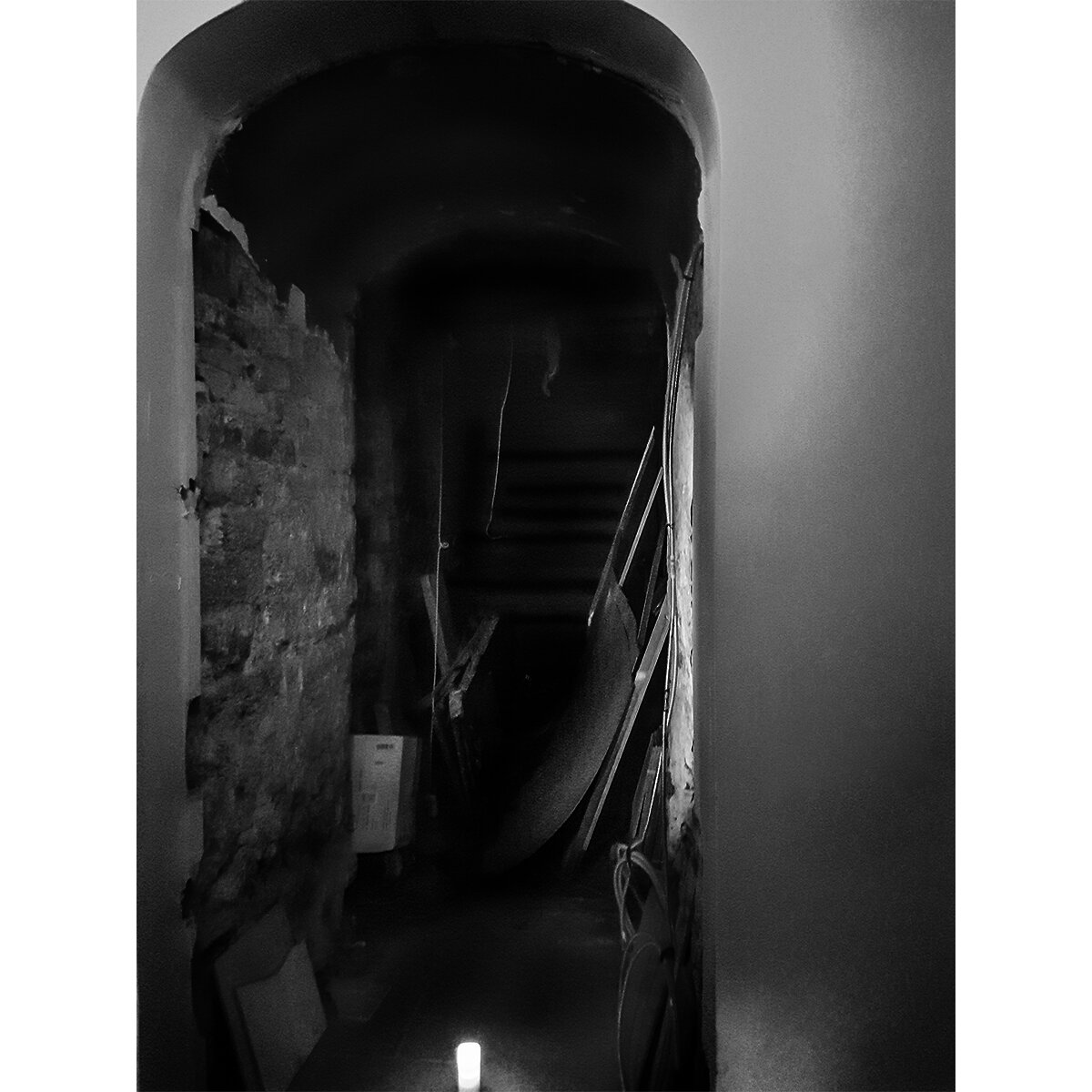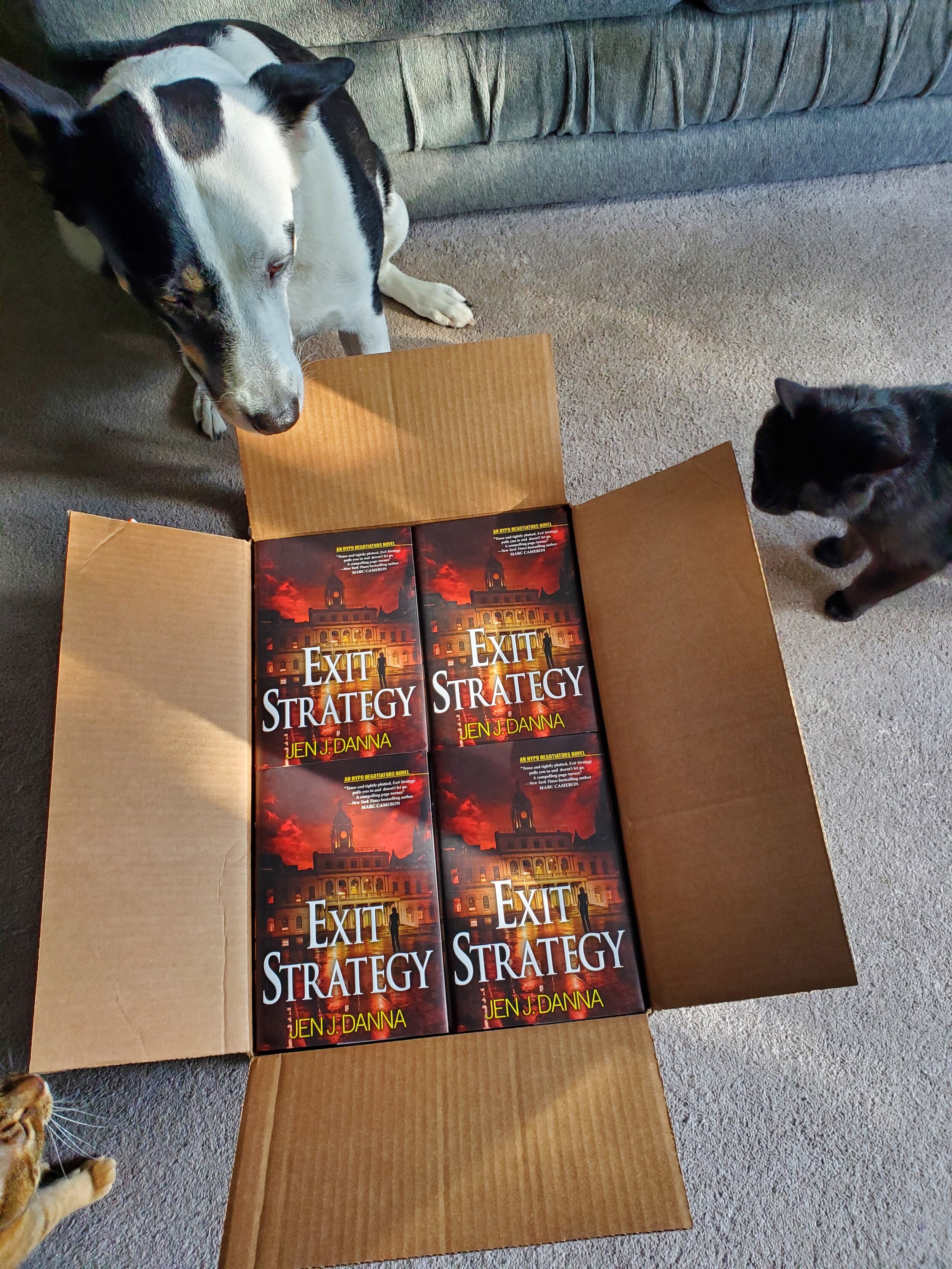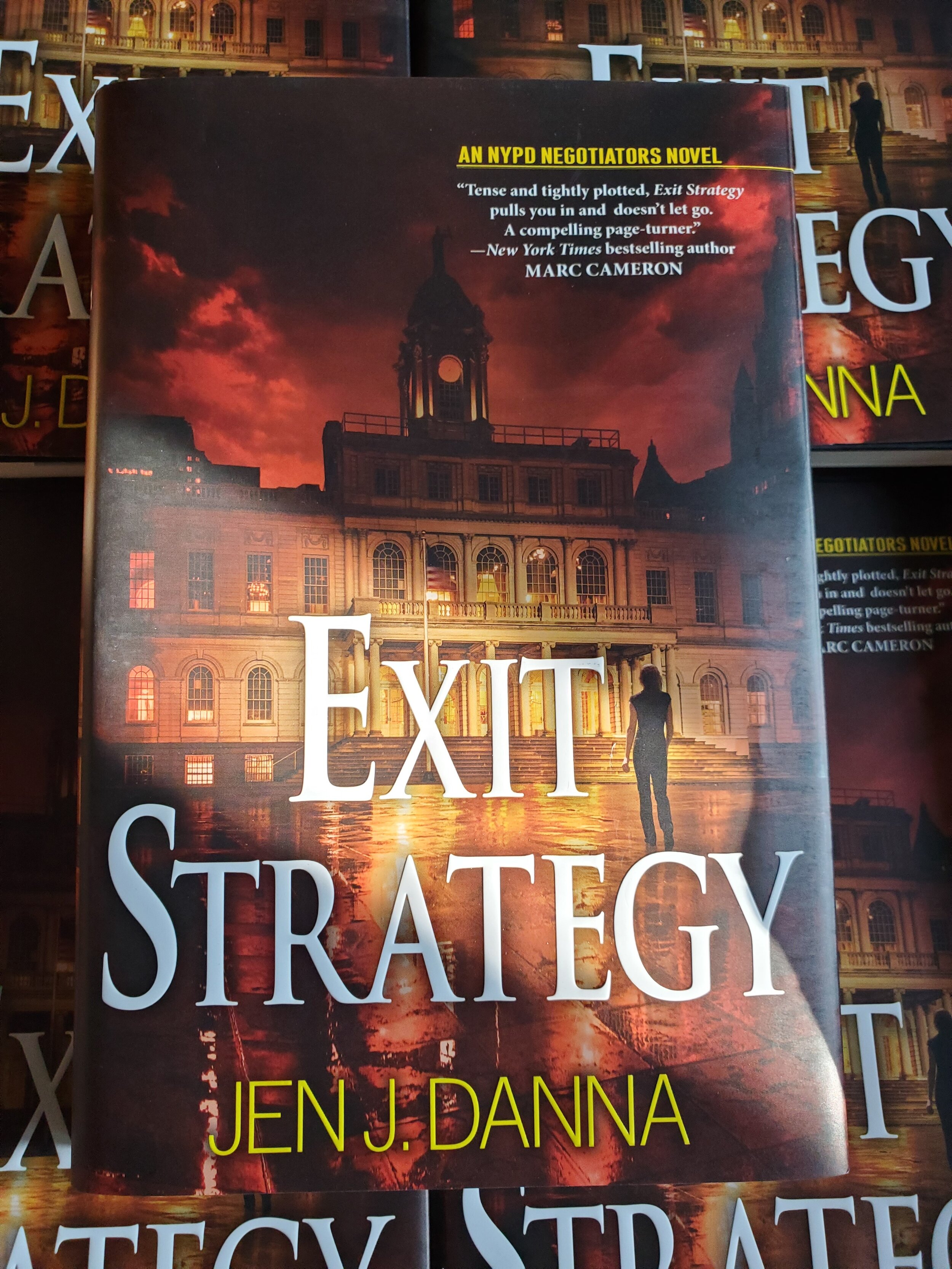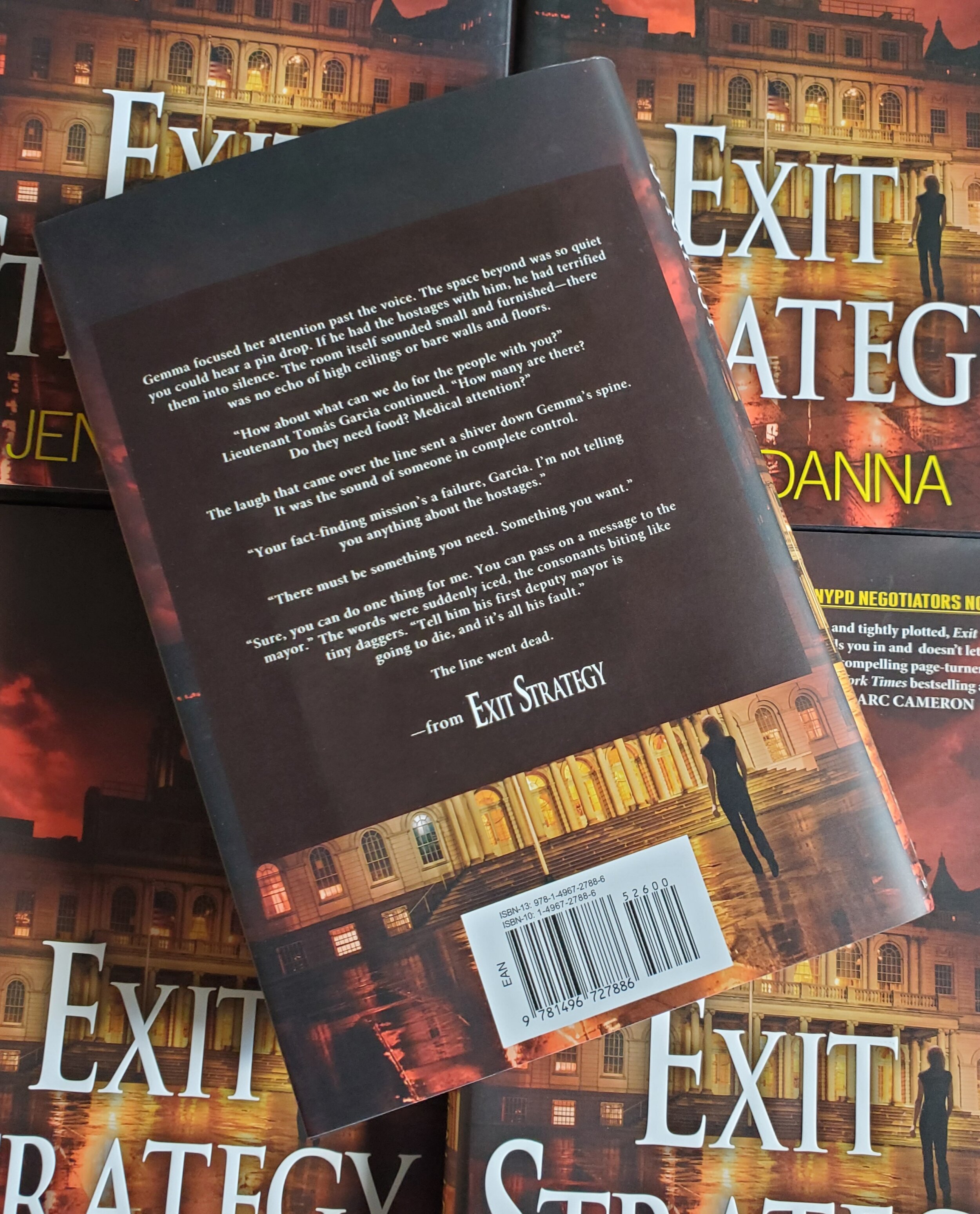It’s Release Day! EXIT STRATEGY Is Out!
/It’s release day and EXIT STRATEGY is finally here! It feels like today has been a long time in coming, and I’m thrilled to say you can now get your hands on your own copy.
What are people saying about EXIT STRATEGY? Here’s some of the advanced praise:
“Tense and tightly plotted, Exit Strategy pulls you in and doesn't let go. A compelling page-turner.”—Marc Cameron, New York Times bestselling author of Tom Clancy: Code of Honor
“An energetic series launch with convincing descriptions of New York City neighborhoods and police tactics, along with flashbacks full of Italian family lore. Fans of contemporary police procedurals will hope to see a lot more of the capable Gemma."—Publishers Weekly
"Danna kicks off her first solo effort with a compelling, dramatic story while using the protagonist’s family background as motivation. Readers who love the TV show Blue Bloods, with its family of cops, will relish this launch."—Library Journal
“Coming in hot. This phrase in its military meaning of “all guns blazing” describes the first book in a new series by Jen J. Danna to a tee. Readers will be riveted to the spot as the clock counts down on a day rife with danger and suspense. Danna has done a superb job of introducing the Capellos and the NYPD Negotiators series to readers. I’m excited about this series and what Gemma and her negotiating team will face next.”—The Reading Room
“Fast-paced and packed with plenty of action. Reading Exit Strategy was like watching a movie, it had that cinematic, high-octane plot speed and plenty going on to keep the reader turning the pages.”—Bibliophile Book Club
“A terrific well-plotted storyline. My hat is off to this author and her attention to detail and the weaving of a great read.”—Rose Point Publishing
One more time for the people in the back, what is EXIT STRATEGY about?
In this taut new suspense series featuring NYPD detective Gemma Capello and her close-knit law enforcement family, a madman brings a halt to the heart of the city that never sleeps . . .
After her mother’s death during a bank robbery when she was a child, Gemma Capello grew up to become one of the NYPD’s elite hostage negotiators. In a family of cops, there’s rarely a day when a Capello isn’t facing down some form of threat. Still, despite their unpredictable schedules, they always find time for their annual family summer picnic. But this year, a sudden phone call changes everything.
A heavily armed gunman has taken hostages at City Hall. Gemma races downtown to join the rest of the Hostage Negotiation Team as they scramble to identify the captives—fearing the mayor may be among them. But as they scramble for answers and struggle to gain control of the circumstances, it becomes clear that the mayor is at the center of it all, just not in the way they initially believed.
With several lives on the line and a criminal who always seems to be one step ahead, Gemma is the only one able to connect with the suspect. Soon, she finds herself engaging in a battle of wits while enduring a battle of egos in the command center. With time running out and a mastermind who has proven he’ll do whatever it takes to get what he wants, Gemma risks it all—her career and her life—in a last-ditch effort to save the hostages. Now, she needs to figure out how to save herself . . .
You can find EXIT STRATEGY available now at these fine retailers: Amazon.com, Amazon.ca, Amazon.co.uk, Audible, Barnes and Noble, Books-A-Million, Bookshop.org, Hudson Booksellers, IndieBound, Indigo, Target, and Walmart.
These are difficult times and many people are stretched emotionally and financially. What’s a reader to do if they can’t afford to go out and buy a hardcover copy of EXIT STRATEGY? There are lots of ways you can still support me and EXIT STRATEGY’s launch:
Word of mouth is one of the best ways to sell new books, so please recommend EXIT STRATEGY to your reader friends.
Talk about the book on social media. Especially during the quarantimes, this a fantastic way to get the word out about a new book or a new series.
Request the book at your local library. I love libraries and they’re a great way for readers to find a new author. But a library member needs to request the book if it’s not already in the catalogue to start that off. That way you get to read it, but then you’re sharing the gift of that book with other library members.
Write reviews on commercial websites like Goodreads or Amazon. Other readers who are interested in the book will look at reviews when they are deciding whether to try a new book. A great review goes a very long way.
Think about book lovers on any upcoming birthday or holiday lists and give EXIT STRATEGY as a gift.
Many thanks to all for their support. Launching a book in the middle of a pandemic definitely has its challenges, especially when the sales from this book will 100% decide if the series will go beyond book #2. So I very, VERY much appreciate all the support from you, my fabulous readers!
And don’t forget the big book launch party tonight. You’ll find me and a group of bestselling Kensington authors here on Facebook tonight from 7 – 10pm EDT: https://www.facebook.com/events/755932971842445/
If you go to the event today, you can sign up so you’re right in the middle of all the action tonight. You can also see some of the prizes we’ll be giving away in posts in the Discussion tab. Seriously, so many prizes. Books, audiobooks, clothing, book tie-in packages, and much more. So please stop by tonight because you may be one of our lucky winners. Hope to see you there!!







































 12.1%
12.1%